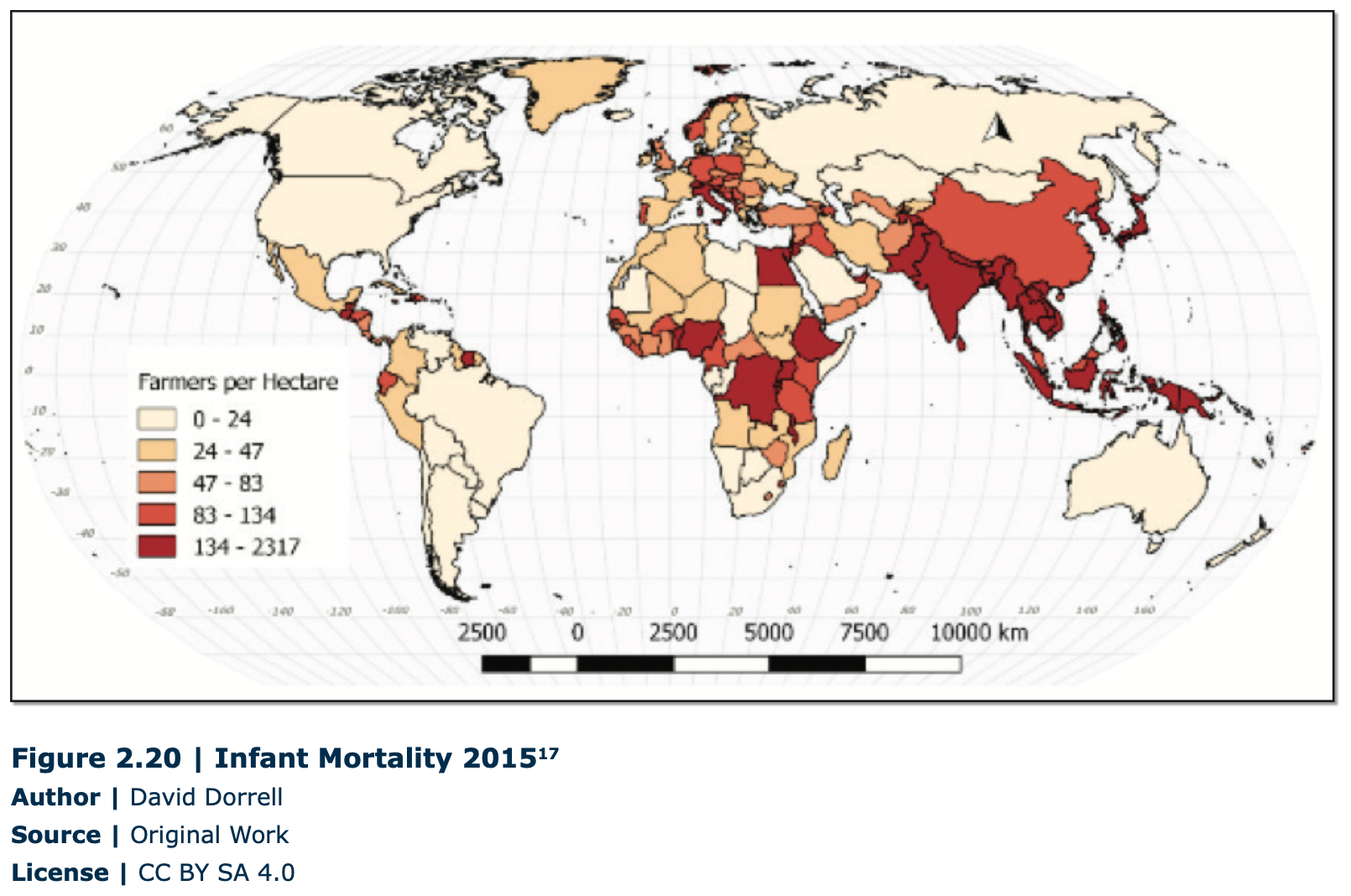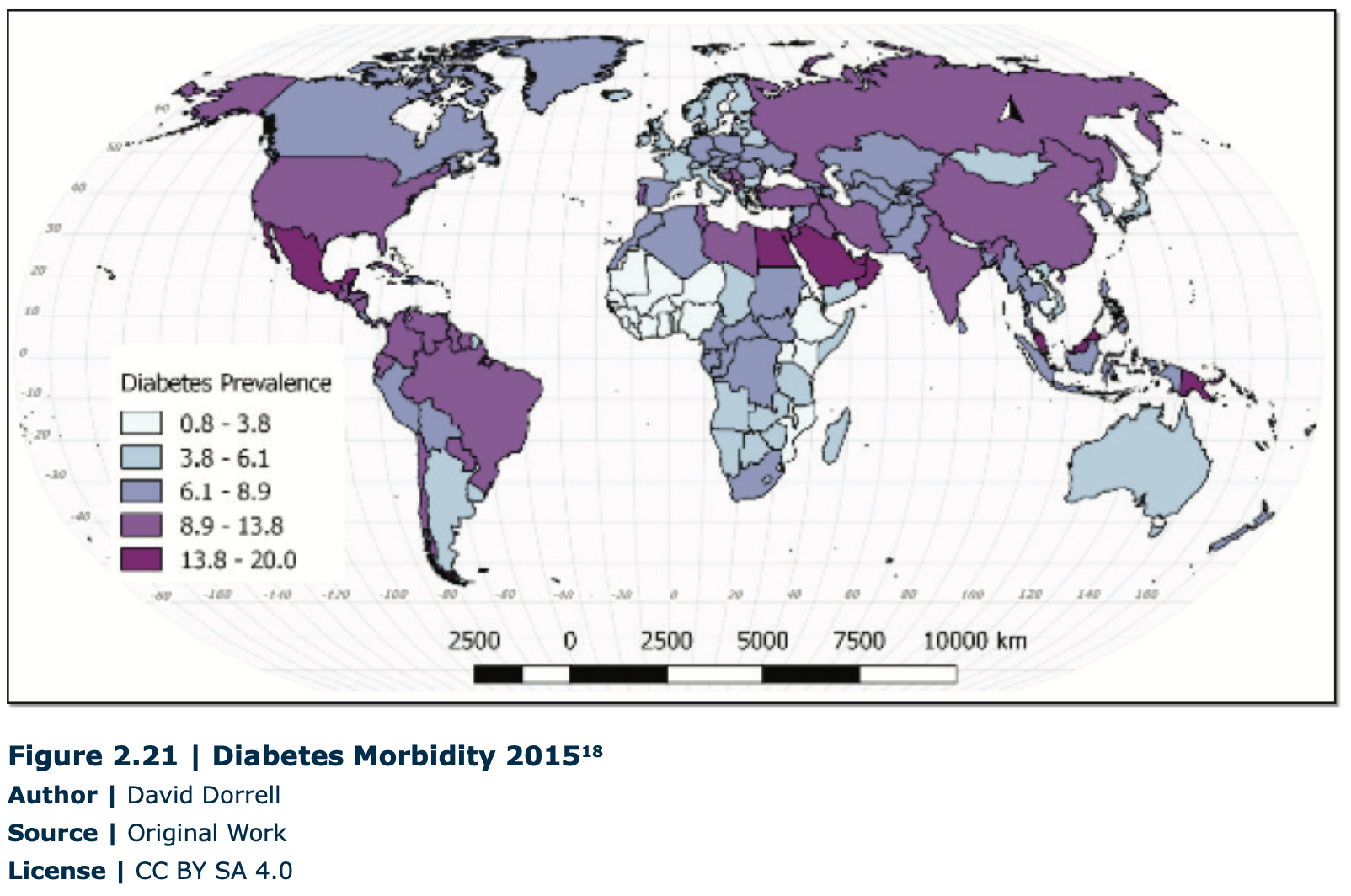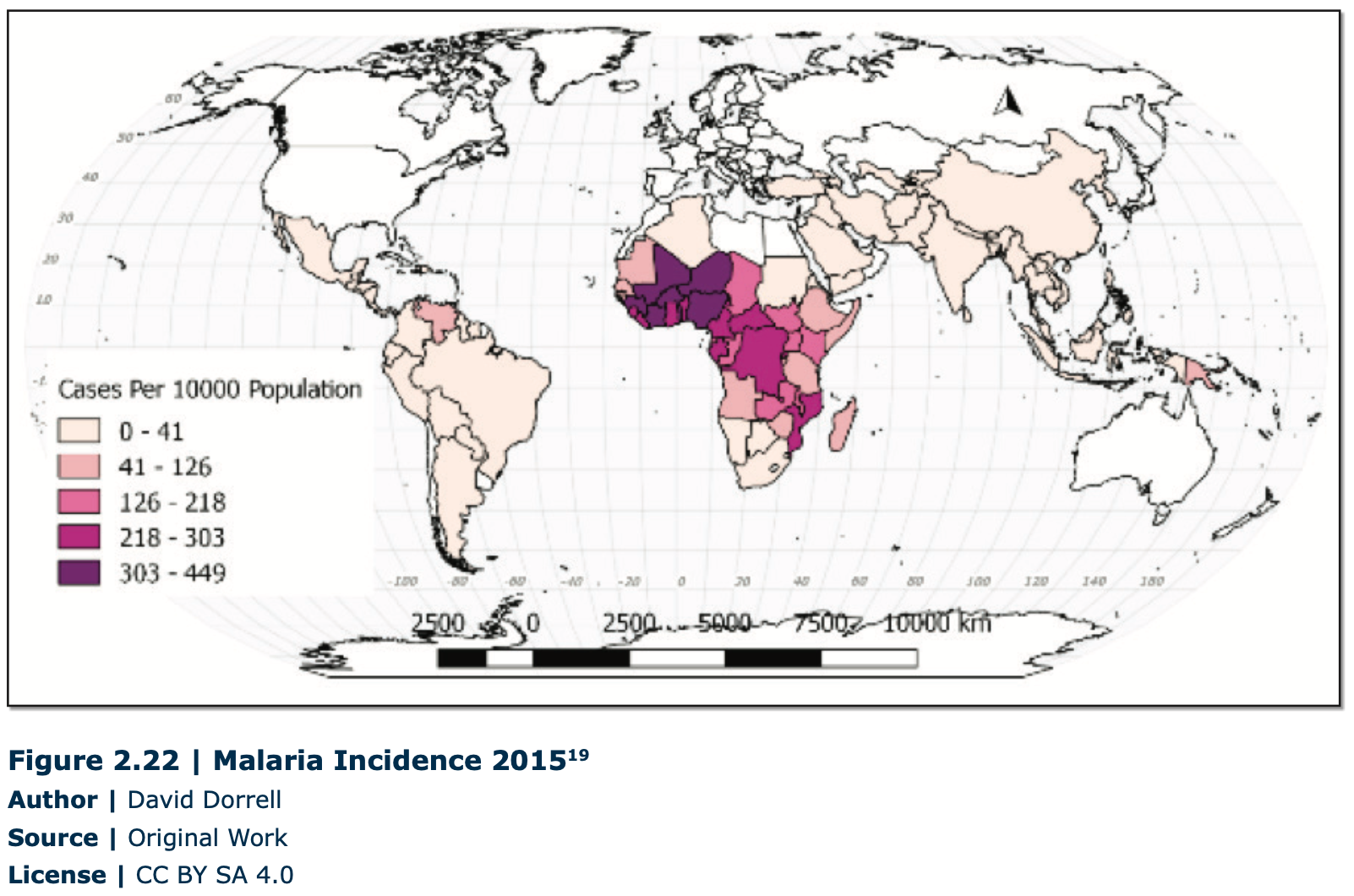2.8: Geography of Health
- Page ID
- 39489
Although the health of populations has been considered in most sections of this chapter, there are some aspects that can be addressed most appropriately on their own. The geography of health or medical geography is the study sickness or health across space. In the same way that it is possible to compare places by their population characteristics, it is possible to compare places by their health characteristics. Also in the same way that societies tend to pass through the stages of demographic transition, they also tend to pass through an epidemiological transition. The demographic transition and epidemiological transition are somewhat related. The improvements in food supply and better sanitation that lead to larger populations also lead to healthier populations. They are not exactly the same thing however. Epidemiology is the study of diseases themselves and the way that they function. The epidemiological transition is a way of representing the relationship between development and disease. In less developed places, infant mortality is high (Figure 2.20) and infectious disease is the greatest threat. In more developed societies, the health threats tend to be chronic afflictionscancer, diabetes, or heart disease. One of the reasons for the difference between the developed and less developed places is the fact that in developed countries people tend to live longer. Countries in which people die in their forties will not have a problem with Alzheimer’s disease.

Mortality refers to death and morbidity refers to sickness. We can look at different rates of mortality and morbidity to gain some insight into the health of a population.
Diabetes was once related to development, but the relationship is weakening (Figure 2.21). As obesity becomes a greater problem in developing countries, so does diabetes.
On the other hand, malaria is a disease of poor countries, or at least it is a disease of poor places (Figure 2.22). The poorer parts of developing countries will likely have malaria problems, while the wealthier parts may not.
One of the changes that has occurred in medical geography is that the differences between the developed and less developed countries have been narrowing. Obesity was once considered fully within the sphere of developed world problems, but the obesity crisis has diffused into many parts of the developing world now. In the same way, infectious diseases such as HIV and Hepatitis C have become problems in developed countries.


Due to the work of numerous organizations, a number of diseases in many parts of the world have been reduced and some have been eradicated. Smallpox no longer exists in the wild and Dracunculiasis (Guinea worm) has gone from millions of cases thirty years ago to single digits in recent years. Other diseases have been dramatically reduced. Polio once infected millions of people per year across the world, but through vaccination programs, its range has been reduced to just two countries.
There is now even a category of diseases known as re-emerging diseases. These are diseases that were previously thought to be eradicable but are now returning to populations that had previously been largely free of them. Re-emerging diseases are diseases like tuberculosis and diphtheria that had been declining for decades that have begun to increase in prevalence.


